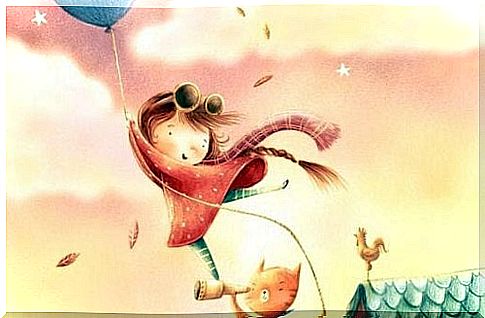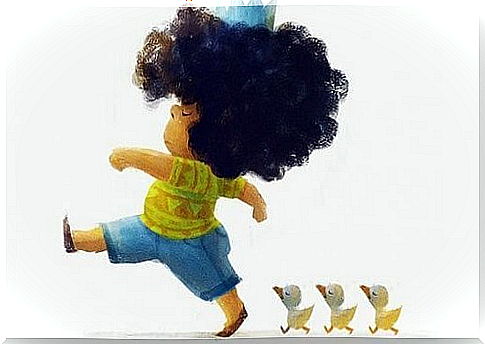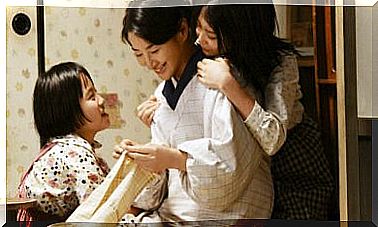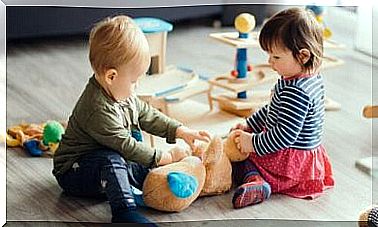A Child’s Imagination – What Is That?

Children excel at imagination and creating their own worlds. Therefore, in this article we will describe the different stages of a child’s imagination. In addition, we will show ways to encourage this even further.
The most important qualities of the little ones are imagination and intuition. Imagination is therefore part of all daily activities.
Imagination is most often found in children. After all, it is their way of communicating with the surrounding world.
Regardless of a child’s reality, he or she will always have their own perception of this. Their imagination takes them by the hand and leads them to places with countless possible experiences.
Discover in this article all the things that shape a child’s fantastic fantasy world.
What is a child’s imagination?
Strange and abstract are words often associated with imagination. Why is this so? This is because imagination is a concept that has no logic or limits.
A child’s imagination peaks when he or she comes up with original and clever ideas. This is also known as ‘thinking further’.

Features of a child’s imagination
Imagination consists of two factors. One is external (the child’s environment) and the other is internal (their subjective impression of the world).
These two factors develop as a child acquires knowledge. They also help children to learn and build relationships.
That’s why we see their imagination at work when they play, talk, eat or put on their clothes. Their perception and subjectivity are among the most characteristic features of their imagination.
Fantasy and imagination
There is a difference between these two terms. Imagination arises from the perception and reinvention of reality. Fantasy, on the other hand, arises from the imaginative power of thought.
Therefore, these matters are not linked to the environment.
Imagination is still present (though not as emphatic anymore) during puberty. Fantasy, however, disappears a little earlier. That is why it is so important that children can enjoy their first years of life.
The development of a child’s imagination
Babies’ brains are very complex. After all, all the connections that will guide them for the rest of their lives are now being formed. The connections that are often used will remain and the others will slowly disappear.
That’s why so many studies emphasize the importance of a child’s first three years of life. This is the perfect time to “condition” all kinds of childhood experiences.
Recommended experiences include listening to music in different languages, reading, playing, walking, and anything that promotes brain development. This stimulation will in turn help to develop the imagination.
It is difficult to describe exactly how imagination develops in babies. Imagination begins to develop when the child is exposed to scenarios where they see themselves as the protagonist.
An example is when a parent or teacher uses fantasy to tell stories. This will strengthen the brain, making ‘connections for the imagination’.
Imagination in children between 1 and 3 years
The imagination at this age is closely associated with imitation. Therefore, the first imaginative experiences will have to do with imitating what is happening around them.
When the dog barks, the child will also want to bark. This form of imitation will help to develop their imagination.
Imagination in Kindergarten
During this phase, archetypal patterns in their games begin to emerge. For example, some children will want to play house, bath or dinner time or care for a doll as if it were a baby.
Imagination in primary school
During this phase, their instincts open the doors to group games. In this way children can fantasize together. The main motivation here is a curiosity for new experiences.
Imagination in schoolchildren no longer focuses on imitation, for now they are already a little bolder to fantasize. Their imagination will be much more abstract during this period.

The imagination of autistic children
One of the most important characteristics of autism is a resistance to learning. As a result, autistic children try to avoid reality by living daily in an imaginary world.
The imagination of children suffering from autism is therefore much more complex. It is also less obvious because in some cases certain linguistic or motor skills are missing.
Their imagination will usually be completely different because it is based on logic and rationality. Neuroscientists are still trying to study exactly how these children’s imaginations work.
How can you stimulate children’s imagination?
- Teach them to be themselves.
- Let them discover their new skills.
- Teach them to discover as many new things as possible.
- Use games to stimulate their imagination.
A lack of imagination
A child’s imagination can be lost in all kinds of situations. Think of a knock in self-confidence, a lack of encouragement or too strict rules at home or at school.
Parents too sometimes destroy a child’s imagination by constantly judging their creations or by not allowing them the freedom to create without logic.
To avoid this, it is important that children are given the opportunity to explore. Give them the freedom to choose what they like and what they feel comfortable with.
This will help them build more confidence and eventually their imagination will take off.









